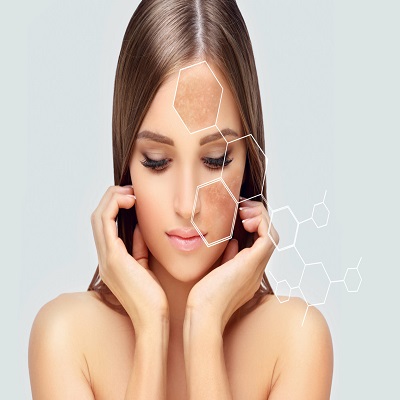Melasma is a widespread skin condition marked by the appearance of dark, irregular patches on the skin, commonly affecting the face. While both genders can develop melasma, numerous studies and clinical experiences confirm that it predominantly affects women. Factors such as hormonal fluctuations, pregnancy, and the use of cosmetic products contribute significantly to this gender disparity. Understanding the prevalence and causes of melasma among women compared to men can help in timely diagnosis and effective treatment. If you’re seeking expert care for this condition, Melasma Treatment in Islamabad is available through professional dermatologists and skin clinics across the city.
Understanding the Basics of Melasma
Melasma, also known as chloasma or “the mask of pregnancy,” is a chronic skin disorder characterized by hyperpigmented macules and patches. It commonly appears on the cheeks, forehead, upper lip, and chin. Although it is not physically harmful, melasma can lead to considerable emotional and psychological distress due to its visible nature. The condition is often triggered by internal factors (such as hormonal changes) and external factors (like sun exposure and cosmetic usage).
Statistical Evidence: Gender Differences in Melasma
Clinical statistics have consistently demonstrated that melasma is significantly more prevalent in women than in men. Research indicates that 90% of melasma cases are diagnosed in women, particularly those of reproductive age. In contrast, only around 10% of cases are found in men. These numbers are consistent across different ethnicities and geographical locations, indicating a strong hormonal and biological link.
Several studies highlight a notable increase in melasma during pregnancy, after starting birth control pills, or when undergoing hormone replacement therapy. All of these are scenarios predominantly experienced by women, which helps explain the gender imbalance.
Why Is Melasma More Common in Women?
1. Hormonal Fluctuations
Hormonal changes are among the primary drivers of melasma in women. Estrogen and progesterone are known to stimulate melanocytes, the cells responsible for pigment production. Elevated hormone levels during pregnancy, menstruation, or due to oral contraceptive use can activate melanin production, leading to hyperpigmentation.
2. Pregnancy (Chloasma)
Melasma that develops during pregnancy is often referred to as chloasma, or the “mask of pregnancy.” During this period, a woman’s body experiences heightened levels of hormones which can result in increased melanin production, especially when coupled with UV exposure.
3. Use of Birth Control Pills and Hormonal Therapy
Many women take oral contraceptives or undergo hormone therapy, both of which can lead to hormonal imbalances that contribute to melasma. Men typically do not experience these hormonal interventions, thereby reducing their risk.
4. Cosmetic and Skincare Product Usage
Women generally use more skincare and cosmetic products than men. Some products may contain irritants or ingredients that sensitize the skin to sunlight or promote pigment formation. The frequent use of such products without proper dermatological supervision can exacerbate melasma.
Melasma in Men: Less Common but Not Rare
Although less frequently diagnosed, melasma does occur in men. Men with darker skin types, a genetic predisposition, or high levels of sun exposure are more prone to developing melasma. Occupations that involve outdoor work can also increase the risk. Unlike women, however, the condition in men is seldom linked to hormonal changes but rather to UV radiation, genetics, and occasionally, the use of photosensitizing medications or shaving products.
Treatment Approaches for Both Genders
Melasma treatment options are generally similar for both men and women, focusing on reducing pigmentation and preventing further recurrence. Common treatments include:
-
Topical depigmenting agents: Creams containing hydroquinone, kojic acid, azelaic acid, or retinoids.
-
Chemical peels: Help to exfoliate the upper layer of skin and reduce dark patches.
-
Laser therapies: Fractional lasers and Q-switched lasers can target deeper pigmentation.
-
Microneedling with serums: Enhances the absorption of lightening agents.
-
Sun protection: Broad-spectrum sunscreens are essential for both prevention and maintenance.
While treatment effectiveness may vary based on skin type and underlying causes, consistent dermatological guidance improves outcomes significantly. Both men and women are advised to follow a strict sun protection regimen and avoid triggers such as harsh skin products.
Psychological and Social Impact: A Shared Concern
Although more common in women, melasma can be emotionally burdensome for anyone who develops it. Studies show that individuals with melasma often report lower self-esteem, anxiety, and social withdrawal due to the visible nature of the condition. The psychosocial effects are equally relevant for men and women, making it imperative to seek timely and effective treatment.
Early Diagnosis Improves Prognosis
Early detection and proper diagnosis by a certified dermatologist can significantly improve the chances of controlling melasma. A comprehensive evaluation typically includes a visual examination, patient history, and sometimes, Wood’s lamp examination to assess the depth of pigmentation.
In Islamabad, access to qualified dermatologists and technologically advanced treatment options makes it possible for both men and women to effectively manage melasma.
Why Addressing Melasma Is Important for Women’s Health
Since women are disproportionately affected by melasma, it becomes essential to incorporate skin health into broader conversations about women’s health and wellness. Educating women about sun protection, hormonal influences, and the importance of consulting dermatologists can lead to better prevention and management outcomes.
Moreover, societal beauty standards often put additional pressure on women to seek treatment for visible skin concerns. This makes it all the more important to offer empathetic, evidence-based solutions tailored to female patients’ needs.
Conclusion
Melasma undeniably affects women more than men, primarily due to hormonal influences, pregnancy, contraceptive use, and lifestyle factors. However, it is a condition that can affect anyone and requires a tailored treatment approach regardless of gender. With timely intervention, ongoing care, and professional treatment, individuals can manage melasma effectively and improve their skin health. If you are dealing with melasma and are looking for expert care in the region, the dermatology team at SKN Cosmetics clinic offers comprehensive treatment plans using advanced technologies and individualized care strategies.





